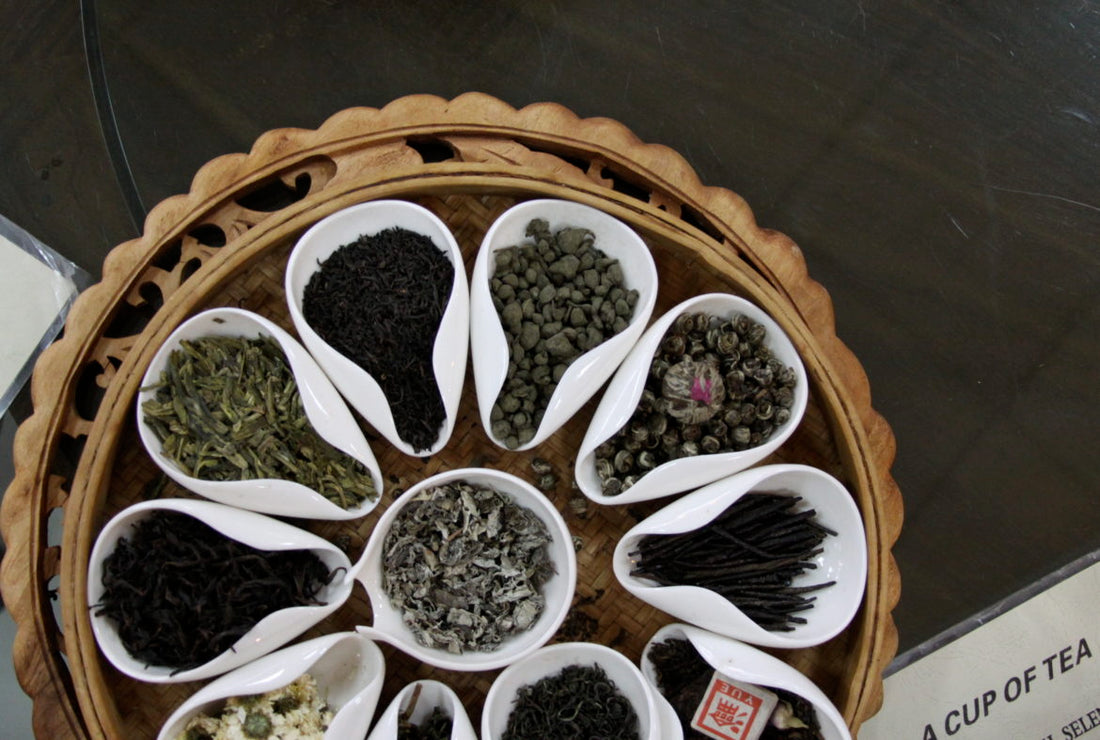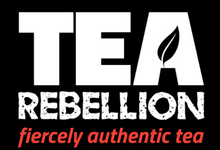
10 Tea Palate Tips for Tea Lovers
Welcome to a journey through the world of tea!
In this guide, we will explore 10 invaluable tips to enhance your tea-drinking experience. Whether you are a seasoned tea enthusiast or a beginner looking to delve into the realm of tea tasting, these palate tips will elevate your appreciation for this ancient beverage. From understanding the nuances of different tea varieties to mastering the art of brewing the perfect cup, each tip is designed to enrich your sensory journey.
Get ready to awaken your taste buds, broaden your tea knowledge, and unlock the secrets of a truly satisfying tea experience. Let's embark on this tea-tasting adventure together, as we uncover the hidden gems of the tea world.
Selecting the Finest Tea Varieties
When it comes to enjoying a cup of tea, the quality of the tea leaves plays a crucial role in determining the overall experience. Selecting the finest tea varieties can elevate your tea-drinking experience to new heights. In this blog section, we will delve into the nuances of understanding tea categories and origins, as well as identifying premium tea quality indicators.
Understanding Tea Categories and Origins
Tea comes in various categories, each with its unique characteristics and flavour profiles. It is essential to familiarise yourself with the different types of tea to make an informed choice. From the delicate notes of white tea to the robust flavours of black tea, understanding the distinctions between categories such as green, oolong, black, white, and herbal teas can help you identify your preferences.
Furthermore, delving into the origins of tea can provide valuable insights into the culture and traditions associated with tea production. Whether it's the rich history of Chinese tea ceremonies or the artisanal methods employed in Japanese tea cultivation, exploring tea origins can deepen your appreciation for the beverage.
Identifying Premium Tea Quality Indicators
Recognising premium tea quality goes beyond just the taste; it encompasses various factors that contribute to the overall tea-drinking experience. Some key indicators of high-quality tea include the appearance of the leaves, the aroma of the brewed tea, the liquor's colour, and the taste profile. By paying attention to these quality markers, you can differentiate between ordinary teas and exceptional ones.
In addition to sensory cues, factors such as the tea estate's reputation, harvesting techniques, and processing methods also play a significant role in determining tea quality. Learning to identify these indicators can empower you to select the finest tea varieties that align with your preferences and standards.
Whether you are seeking a soothing cup of chamomile tea before bedtime or a bold brew of Assam black tea to kickstart your morning, understanding tea categories, origins, and quality factors can guide you towards selecting the finest tea varieties that cater to your palate.
Enhancing Tea Preparation Techniques
Tea is not just a beverage; it's an experience. To truly appreciate the delicate nuances of tea, one must master the art of tea preparation. In this blog section, we will delve into the finer details of enhancing your tea preparation techniques to elevate your tea-drinking experience to new heights.
Optimal Water Temperature and Steeping Times
Achieving the perfect cup of tea starts with getting the basics right. We will explore the impact of water temperature on different types of tea and the importance of steeping times. Learn how to avoid bitterness from over-steeping or missing out on flavour due to under-steeping. Discover the ideal water temperatures for green, black, oolong, and herbal teas, and how steeping times vary to bring out the best in each type.
Art of Brewing for Optimal Flavour
Brewing tea is not just about pouring hot water over leaves; it's a delicate process that can significantly impact the taste of your tea. Discover the secrets to unlocking the full potential of your tea leaves through proper brewing techniques. From the type of teapot to the pouring method, every detail matters when it comes to maximising flavour extraction. Explore different brewing methods like Gongfu Cha for Chinese teas or the traditional British method for black teas, understanding how each style enhances the flavours uniquely.
Tea Leaf Quality and Varieties
The quality and variety of tea leaves used play a crucial role in the final brew's taste. Delve into the world of tea grades, from whole leaf to dust, and understand how each grade affects the overall tea-drinking experience. Learn about single-origin teas, blends, and flavoured teas, and how to choose the best quality leaves for your preferred tea type.
Importance of Water Quality
Water quality is often overlooked but can make a significant difference in the taste of your tea. Explore the impact of water hardness, impurities, and pH levels on tea brewing, and how to choose the best water for brewing different types of tea. Discover the benefits of using filtered or spring water and how it can enhance the flavours of your favourite teas.
Get ready to embark on a journey of tea exploration as we uncover the secrets to enhancing your tea preparation techniques. Elevate your tea rituals and savour every sip with a newfound appreciation for the art of tea-making.
Mastering the Art of Tea Tasting
Tea tasting is not just about drinking a beverage; it is a sensory experience that engages all your senses. From the moment the tea leaves are infused in water to the final sip, every step is an opportunity to appreciate the complexity and nuances of this ancient brew. In this blog post, we will delve into the world of tea tasting and explore how you can elevate your tea drinking experience to a new level.
Engaging Senses for a Holistic Tea Tasting Experience
- Sight: The visual aspect of tea can provide clues about its quality and flavour. Take a moment to observe the colour of the liquor and the unfurling of the leaves. A vibrant hue and well-formed leaves often indicate a superior tea.
- Smell: The aroma of tea is a crucial element in the tasting process. Close your eyes and inhale deeply to capture the subtle notes. From floral to earthy, the fragrance can reveal a lot about the tea's origin and processing.
- Taste: When it comes to tasting tea, take small sips and let the flavours dance on your palate. Note the initial taste, the evolving flavours, and the aftertaste. Pay attention to the texture, temperature, and strength of the brew.
- Touch: The mouthfeel of tea, often referred to as 'body', can range from light and delicate to rich and robust. Is the tea smooth or astringent? Does it coat your mouth or feel refreshing?.
- Sound: While it may seem unconventional, the sound of tea preparation can add to the overall experience. Listen to the water boiling, the leaves rustling, and the tea being poured. These auditory cues can enhance your connection with the tea.
Recognising Diverse Flavour Profiles and Aromas
Tea is a versatile beverage with a myriad of flavour profiles and aromas. Here are some common categories to help you identify and appreciate the diversity in tea:.
- Green Tea: Fresh, grassy, vegetal.
- Black Tea: Malty, fruity, bold.
- Oolong Tea: Floral, creamy, toasty.
- White Tea: Delicate, sweet, subtle.
- Herbal Tea Spicy, soothing, aromatic.
By familiarising yourself with these flavour profiles, you can develop a discerning palate and discover teas that resonate with your preferences.
Tea tasting is a sensory journey that invites you to slow down, savour the moment, and connect with the rich tapestry of flavours and aromas in every cup. Whether you are a novice or a seasoned tea enthusiast, mastering the art of tea tasting is a rewarding pursuit that promises to deepen your appreciation for this timeless beverage.
Tea Pairing and Culinary Delights
Harmonising Tea Flavours with Food Profiles.
Tea has the remarkable ability to complement a wide array of food profiles, enhancing the dining experience to new heights. It's not just about enjoying a cup of tea alongside your meal; it's about creating a symphony of flavours that dance on your palate. From delicate floral notes to robust earthy tones, the world of tea offers a diverse range of flavours to play with. Pairing the right tea with your food can elevate both the tea and the dish, creating a harmonious balance that tantalises the taste buds.
Creating Harmonious Tea and Food Combinations
When it comes to tea pairing, the key is to match the intensity and flavour profile of the tea with the dish. For example, a light and floral green tea can beautifully complement a fresh salad or a light seafood dish, while a bold and robust black tea pairs wonderfully with rich, chocolatey desserts or hearty meat dishes. Experimenting with different tea and food combinations can lead to delightful discoveries, uncovering new dimensions of taste and pleasure. Whether you're hosting a formal dinner party or simply enjoying a quiet meal at home, exploring the world of tea pairing can add an exciting and sophisticated touch to your culinary adventures.
Enhancing the Tea Experience with Food
Tea pairing is not just about finding complementary flavours; it's also about enhancing the overall tea-drinking experience. Consider the temperature of the tea and how it interacts with the temperature of the food. A steaming cup of chai can be the perfect companion to a spicy curry, offering a contrast in temperatures that enlivens the palate. Similarly, a refreshing iced tea can be a cooling counterpart to a zesty summer salad, creating a refreshing and invigorating dining experience.
Exploring Cultural Tea Traditions
Tea pairing is deeply rooted in various cultural traditions around the world. From the elegant tea ceremonies of Japan to the hearty tea and biscuit rituals in the UK, different cultures have unique approaches to pairing tea with food. Exploring these cultural tea traditions can provide a wealth of inspiration for creating your own tea and food pairings. Whether you're drawn to the simplicity of Chinese tea and dim sum pairings or the opulence of Russian tea cakes with fragrant teas, delving into cultural tea practices can open up a world of possibilities for culinary delights.
The Art of Tea Pairing
At its core, tea pairing is an art form that invites creativity and experimentation. Just as a sommelier carefully selects wines to accompany dishes, a tea enthusiast can curate a tea menu that enhances the flavours of each course. Consider the mouthfeel of the tea – whether it's smooth and velvety or crisp and astringent – and how it interacts with the textures of the food. The art of tea pairing is a sensory journey that engages not only the taste buds but also the sense of smell, touch, and sight, creating a multi-dimensional dining experience that celebrates the diversity of tea and food.
Elevating Everyday Dining
While tea pairing can certainly add a touch of elegance to special occasions, it can also elevate everyday dining experiences. Whether you're enjoying a leisurely brunch with friends or unwinding with a comforting cup of tea after a long day, incorporating tea pairing into your daily routine can bring a new dimension of pleasure to simple moments. By paying attention to the nuances of flavour, aroma, and texture in both the tea and the food, you can transform ordinary meals into extraordinary culinary adventures that delight the senses and nourish the soul.
Conclusion
Mastering the art of tea tasting can greatly enhance the enjoyment of tea for all tea lovers. By following these 10 tea palate tips, enthusiasts can develop a deeper appreciation for the complexities and nuances of different teas, leading to a more fulfilling tea-drinking experience. Embracing these tips can help individuals discover new favourite teas, broaden their tea palate, and ultimately, elevate their tea-drinking rituals. So go ahead, brew, sip, and savour the world of tea with these expert tips!.
